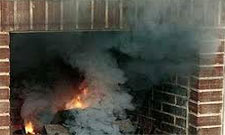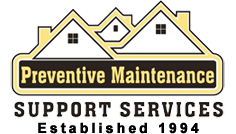
It is not uncommon to come across chimney draft issues and problems. Many homeowners complain about their house smelling of smoke or having trouble getting a fire started. Almost everybody has a “bad” stove or fireplace experience. Well, the root cause lies with the chimney, which is the instrument of every wood-burning system. Thus, if you want the fire to burn properly, the chimney must be clean to pull up the combustion air. Before you go ahead and understand the chimney draft issues and look for the solutions, it is essential to understand how the air flows up the chimney. Bad chimney can damage your roof.
What affects the performance of a chimney?
The two aspects that impact the chimney performance are its draft and capacity. The capacity is the competence of the chimney to handle the flow, and the draft is the force behind the flow. The draft is made of volume, speed, and pressure of the flue gasses and the temperature of these gasses too has a role to play. Good draft conditions get created when the vented gasses are able to travel p the chimney quickly. The diameter of a chimney is an essential factor here as too wide or too narrow can hamper with the draft and its capacity.
Symptoms that you have problems
When the Stove back puffs on windy days or the fire is reluctant to start, those are some warning signs of chimney draft issues. Gradually, the smoke will start spilling into the room, and it can spill further at larger, damper openings. If you feel that the heat output is too low and the smoke odors remain persistent even when the stove or the fireplace is not in use, you should get anxious. You should know a problem when you spot one and should be able to sort them out without getting into the physics of chimneys.
Steps to take
Chimney Draft problems can lead to serious health and safety concerns. Thus, one should not ignore them or take any chances. If you are facing any of the above issues or problems, then just follow these steps.
Step 1. Contact a certified chimney inspector right away and have him take a look at your system and to ensure that everything is in good working condition. He will recommend any corrective action if necessary.
Step 2.Whenever using the fireplace, keep the damper open.
Step 3. Use a protective metal screen to defend your household from embers or sparks whenever using the fireplace.
Step 4. Swath off any return air vent in the same room before you start a fire.
Step 5. For an air tight home, leave a window slightly open to prevent draft problems when using the fireplace.
Step 6. Place the metal fire grate in the fireplace as far back as possible.
Step 7. Raise the chimney height to get more draft.
Just take all those percussions and enjoy a safe fire without any of those chiming drafting issues. Enjoy a nice and relaxing time near the fire with your family and get a peace of mind that your house is safe.



